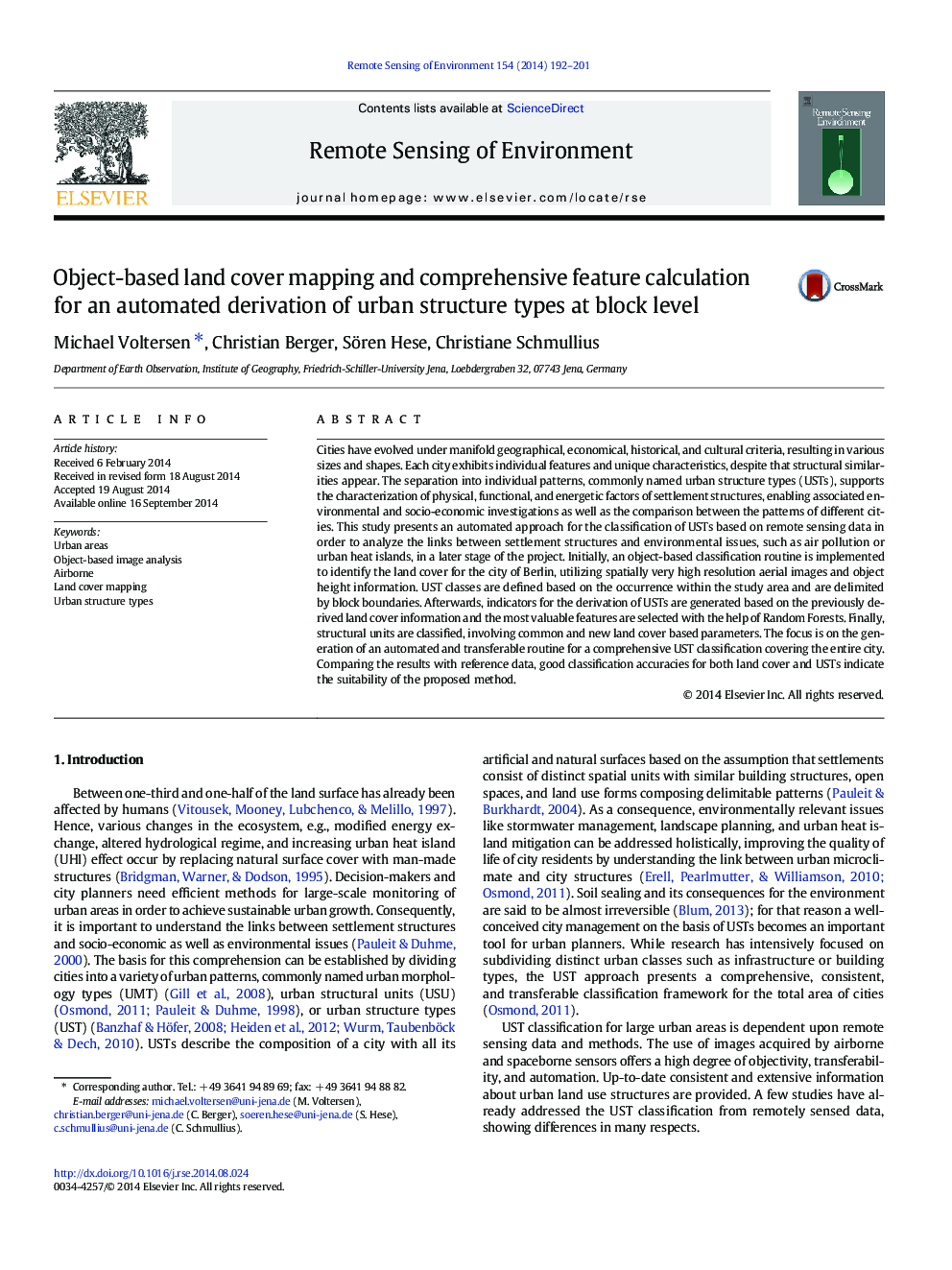| کد مقاله | کد نشریه | سال انتشار | مقاله انگلیسی | نسخه تمام متن |
|---|---|---|---|---|
| 6346431 | 1621246 | 2014 | 10 صفحه PDF | دانلود رایگان |
- Normalized object heights were derived from a DSM within eCognition.
- Accurate land cover classification of the city of Berlin is performed object-based.
- 3D features and landscape metrics provide valuable information about city blocks.
- Feature selection with Random Forests improves UST mapping.
Cities have evolved under manifold geographical, economical, historical, and cultural criteria, resulting in various sizes and shapes. Each city exhibits individual features and unique characteristics, despite that structural similarities appear. The separation into individual patterns, commonly named urban structure types (USTs), supports the characterization of physical, functional, and energetic factors of settlement structures, enabling associated environmental and socio-economic investigations as well as the comparison between the patterns of different cities. This study presents an automated approach for the classification of USTs based on remote sensing data in order to analyze the links between settlement structures and environmental issues, such as air pollution or urban heat islands, in a later stage of the project. Initially, an object-based classification routine is implemented to identify the land cover for the city of Berlin, utilizing spatially very high resolution aerial images and object height information. UST classes are defined based on the occurrence within the study area and are delimited by block boundaries. Afterwards, indicators for the derivation of USTs are generated based on the previously derived land cover information and the most valuable features are selected with the help of Random Forests. Finally, structural units are classified, involving common and new land cover based parameters. The focus is on the generation of an automated and transferable routine for a comprehensive UST classification covering the entire city. Comparing the results with reference data, good classification accuracies for both land cover and USTs indicate the suitability of the proposed method.
Journal: Remote Sensing of Environment - Volume 154, November 2014, Pages 192-201
